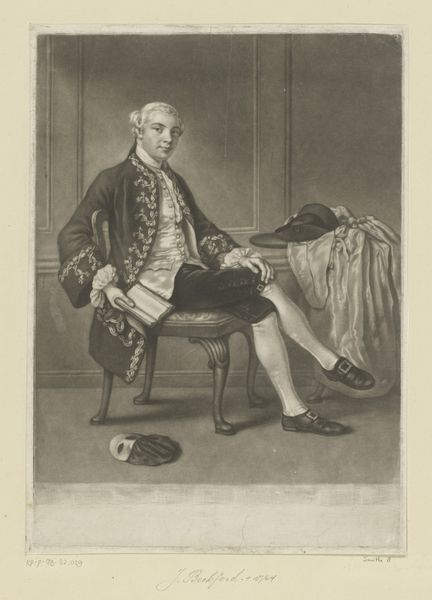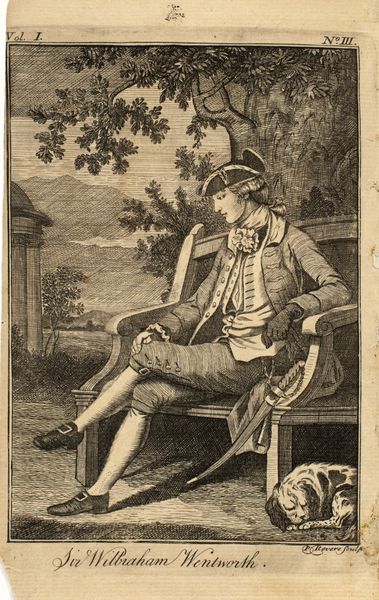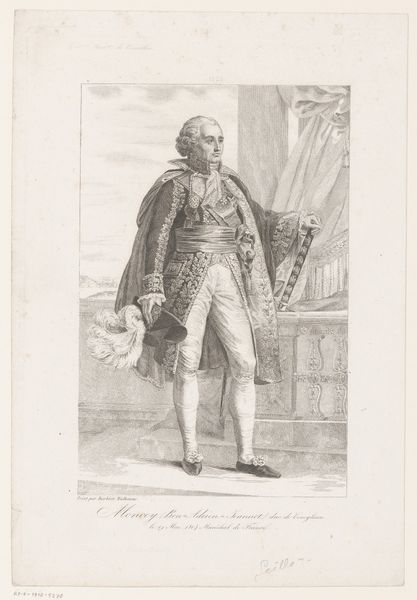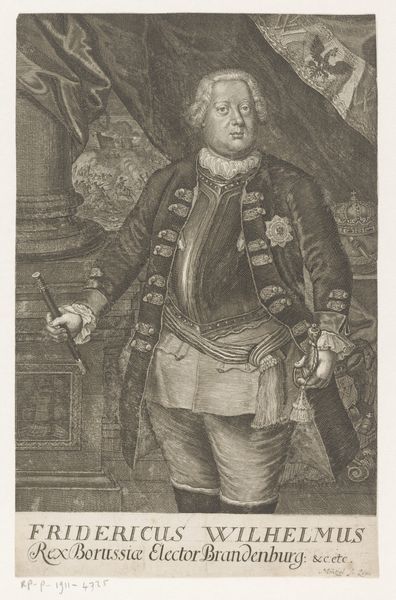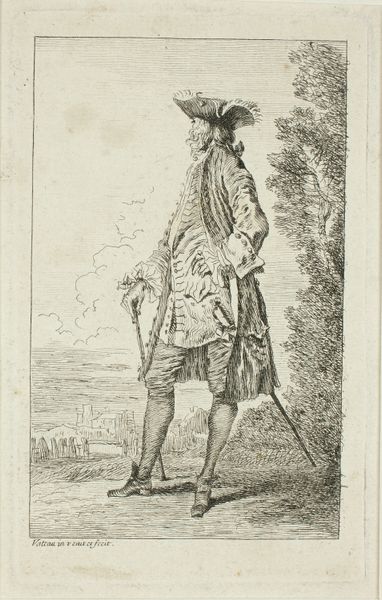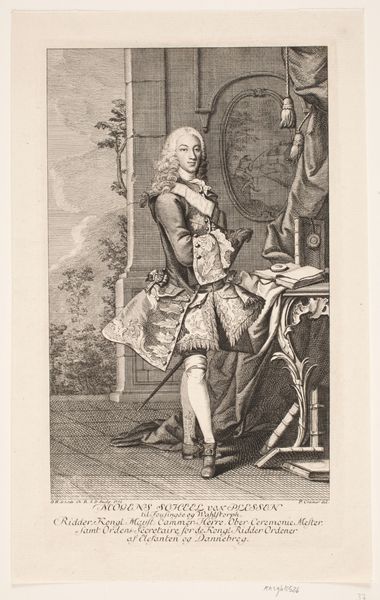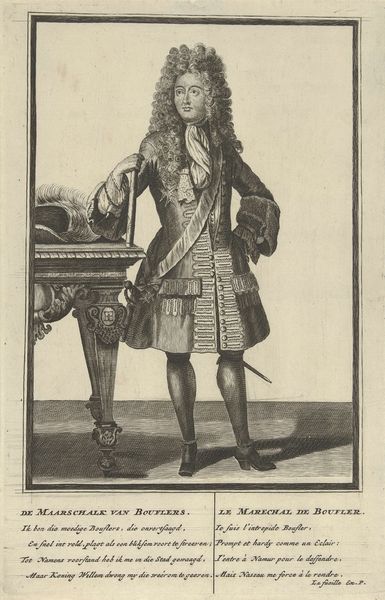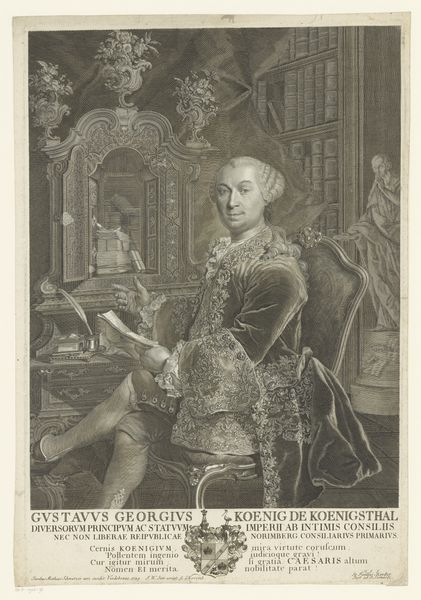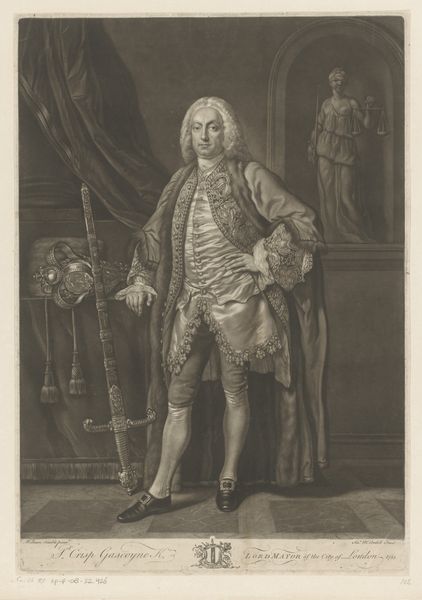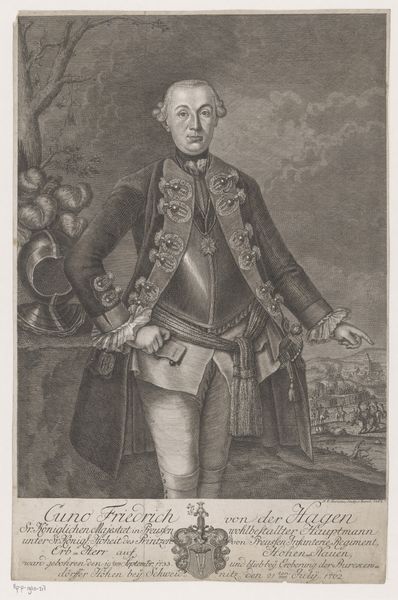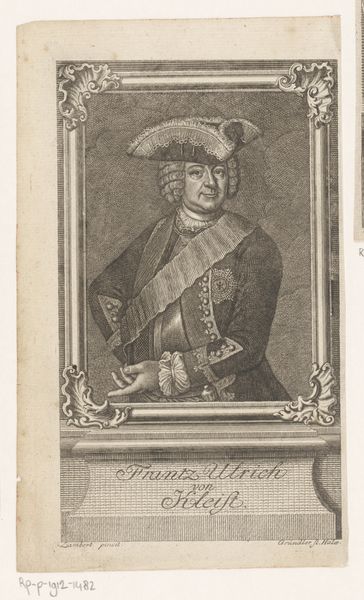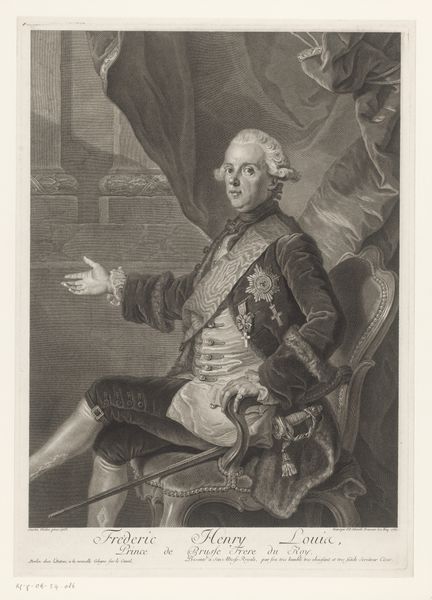
Dimensions: sheet: 13 7/16 x 8 11/16 in. (34.2 x 22 cm)
Copyright: Public Domain
Editor: This is William Hogarth’s 1763 etching, “John Wilkes, Esq.,” now at the Met. It feels incredibly pointed – almost cruel. The distortion is so severe, and the Liberty cap on a pole makes a rather strong statement, doesn’t it? How do you interpret this work? Curator: Hogarth was a master of visual rhetoric, and this print is charged with symbols meant to shape public perception. Wilkes, holding the pole of Liberty, embodies a fight for freedom – but Hogarth complicates this. Consider how he uses caricature: the exaggerated features aren’t just funny, they suggest underlying moral failings, maybe even corruption. Editor: So, Hogarth isn't necessarily celebrating Wilkes's fight for liberty? He's questioning it? Curator: Precisely! Notice how the "Liberty" symbol itself, topping the pole, almost weighs Wilkes down. Is he truly carrying the concept of freedom, or is he burdened by its supposed promise? What emotional and political charge do you get from seeing “North Briton NUMBER 17” scribbled on the table next to his elbow? Editor: It definitely suggests controversy – associating him with a specific, perhaps contentious, publication. Maybe Hogarth sees Wilkes as using the idea of Liberty as a tool? Curator: Perhaps! Think about how images shape our understanding of historical figures. Hogarth strategically deploys recognizable symbols, turning Wilkes into a representation of a complex political debate about rights and responsibilities. Editor: This really makes me rethink the power of images. Thanks! Curator: A potent piece! And I am intrigued at your openness for questioning the weight of “Liberty”.
Comments
No comments
Be the first to comment and join the conversation on the ultimate creative platform.
